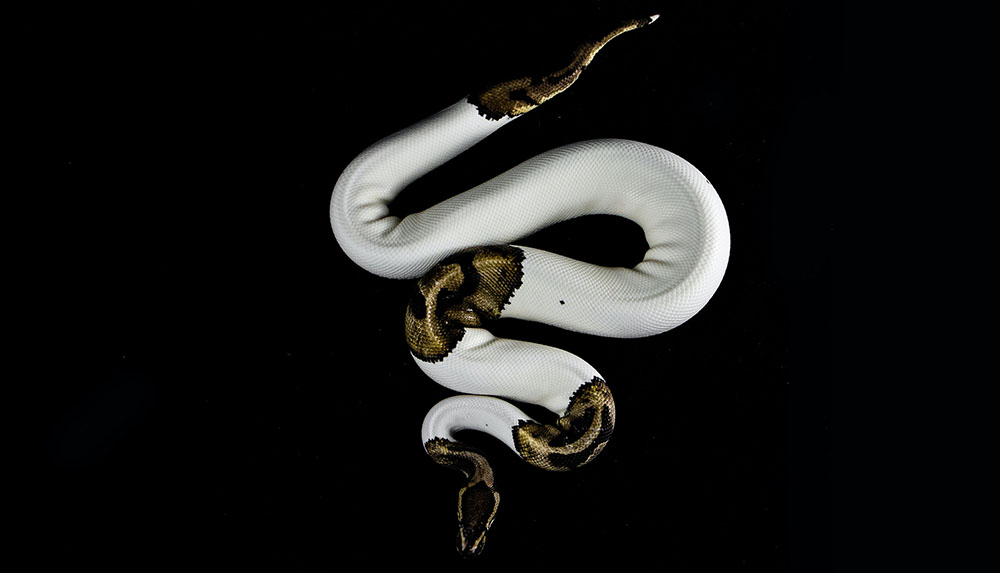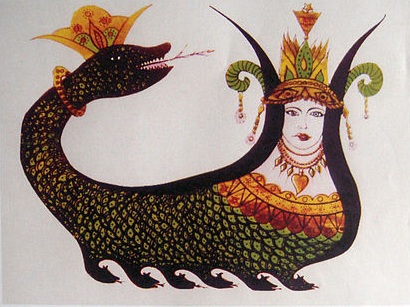I try to avoid watching long form t.v. — by “long form” I mean any drama whose continuing story spans one, two, three, or more seasons (like Lost or Game of Thrones), vs. “episodic” shows, which contain a (largely) standalone story within each episode (like Law & Order or ER).
Long form shows have become very popular in recent years, as streaming services look to increase their hours viewed stats.
The problem is, it’s very hard for writers to offer an effective story arc if they don’t know how long their show will run. And even if they know how they want everything to pan out, with so many episodes to write, there’s gonna be some filler. So, you end up with endless and unending (ok, those are the same) plot. Complicated, often pointless (IMHO) plot.
So I avoid them, in general.
Netflix suggestions work their magic
But, I was curious when, while idly browsing Netflix, I encountered what looked like a long form romance — a Turkish t.v. series called Shahmaran.
This was the write-up:
In this fantasy drama series, a lonely young woman finds her soul mate and discovers they are both part of an ancient legend.
Soul mate? I was intrigued, plus keen to procrastinate on whatever else I was supposed to be doing, so I started watching.

Snakes down the lane
Shahmaran is the story of a snake-man (who looks less like a snake, and more like a hot human male) who is prophesied to fall in love with a particular human woman, and thereby bring about peace and understanding between humans and Basilisks (the technical term for the snake-people). Or avert the end of the world. Or something like that.
But, unlike his serpentine father and gaggle of three slithery sisters (also just human-looking), the snake-man, whose name is Maran, is too busy tinkering with car engines and brewing perfume to believe in the prophecy.
Maran’s skepticism is challenged when the particular woman he’s supposed to fall in love with happens to move in across the street, and starts frequenting his favourite swimming hole.
Șahsu (pronounced Shaw-Soo) is a city girl who’s moved to the neighbourhood to teach a psychology course at the local college and reunite with her mysterious, dead-beat grandfather. Blissfully unaware of the prophesy, and of her neighbours’ snakish traits, she strikes up a friendship with her destined match.

What I liked
The prophecy
I confess I was drawn in by the show’s “he knows, she doesn’t” dynamic. It’s quite romantic when Maran reluctantly meets this woman he’s been told his whole life he’s destined to love. And this dynamic is the primary source of much of the tension in the series, as Maran gets closer to Șahsu, while keeping this secret from her.
The cinematography
Someone involved in this show understands how to shoot romance. There were lots of close-ups of pained awareness and stolen glances. The scenes by the swimming hole were particularly effective, as the pair take turns ogling each other. And it’s sexy — there’s one dream sequence involving a large snake crawling into Șahsu’s bed while she sleeps that’s quite titillating.
Opposites attracting
I also liked the couple’s relationship dynamic. She’s what I would term an “alpha female” — outspoken, career-driven, and slightly caustic at times, she’s sworn off love and family for life. Whereas, Maran is the classic family-oriented beta male — modest and unassuming, he lives with his father and sisters, and tries to keep his fangs out of politics. Opposites do attract, and it’s nice seeing their differing personalities rub up against each other (so to speak).
Also, she’s human and he’s a snake-person, so, yeah, they’re different in that way, too.
I also like that their early antagonism morphs into a friendship. Animosity can be a great source of romantic tension, but it can be taken too far. In this series, the leads spend more time as friends than enemies, which makes the romance kinda credible (if you look past the snake thing).

Maran’s chivalry
I won’t bore you with the serpentine politics involved (also I wasn’t paying enough attention to relate those details), but the prophecy puts Șahsu in danger. While Maran still overtly denies any belief in his destiny, he takes it upon himself to protect her. Which is kind of sweet.
His slithery sisters
One of the most enjoyable elements of the show is Maran’s three super-powered sisters, who are all firm believers in the prophecy, and take it upon themselves to play matchmaker for their doubting brother. A highlight is the scene where Maran climbs through the window into Șahsu’s bedroom, while the sisters watch from across the way, squealing with glee.
What I disliked
Enough serpentine politics, already
Who knew Basilisks would bicker so much among themselves? Slither me timbers! So many factions, debates, schemes, and all out physical fights! Again, I confess that I didn’t pay strict attention to this part of the story, but what I did take in, I found a bit silly.

Too much moulting
Ok, I get that Maran is a snake-man. He doesn’t shape-shift (though maybe that was due to budget constraints?), so his only symptoms of snaky-ness are a pair of fangs behind his perfect human-type teeth, the occasional flash of snake eyes, and a tendency to moult at inconvenient times (like, when he’s trying to get it on with Șahsu).
If he just moulted once, in a single go — you know, with one whole piece of skin — I might have been ok with that. (Maybe???). But, it was, like, pieces of skin that he pulled off. So, not really sexy, per se.
Play up the phallic snake traits, and leave out the moulting, is my advice to these filmmakers.
It tends to drag
There were many dream sequences. And scenes of Șahsu’s grandfather looking devastated. And scenes of Șahsu being concerned and confused about how the locals are treating her. And, the aforementioned snake politics.
For me, the story really dragged when the romance wasn’t at the forefront, which was much of the time.
What does Shahmaran mean, anyway?
Apparently, a Shahmaran (or Șahmaran) is a snake-human hybrid from Middle Eastern mythology. Based on illustrations I’ve seen (see below), it looks like a mermaid, but with a snake bottom, instead of a fish bottom. Oh, and the other end is the snake’s head, not its tail. Hmm. Not sure why it has so many legs…

I really hope next season isn’t the story of Șahsu and Maran merging into this sort of creature.
Is Shahmaran an effective romance?
I am aware this show was not billed as a romance. And the filmmakers probably had other goals when they set out to make this. But, since the prophecy at the heart of the story is fully entwined with the romance plotline, you can’t deny romance is central to the show. So it should be done right!
And I wouldn’t say they botched it, not at all. But, as I suspected it might, the long form works against the romance.
There’s just too much “filler”, as I would term it. It drowns out the romance. So, instead of building toward the dramatic romantic conclusion, the show busily deals with a host of other plot elements, and the romance gets lost in the shuffle.
So if you’re anything like me, by the time you reach that passionate conclusion, you might be a little bit bored.
But, I kept watching ’til the end. Such is the power of romance.
Would I recommend it?
Yes! I boldly declare that, if you like this sort of thing, you’ll probably like this. I would certainly recommend it to Ophidiophiles who like a little romance with their moulted bits, and to romance lovers who aren’t Ophidiophobes.

Dawn
Hello Winter, I loved reading your critique on Shahmaran. You had me at ‘who looks less like a snake, and more like a hot human male’! This is what drew me in to this story, the beautiful man and the chemistry between Maran and Sahsu. I love a good love story and enjoyed every moment of this show, it all blended for me. Looking forward to your thoughts on the second season.
Winter St James
You know, I didn’t even realize there was a second season until I noticed a big spike in views for this article. I will have to check it out!
Thanks for reading!